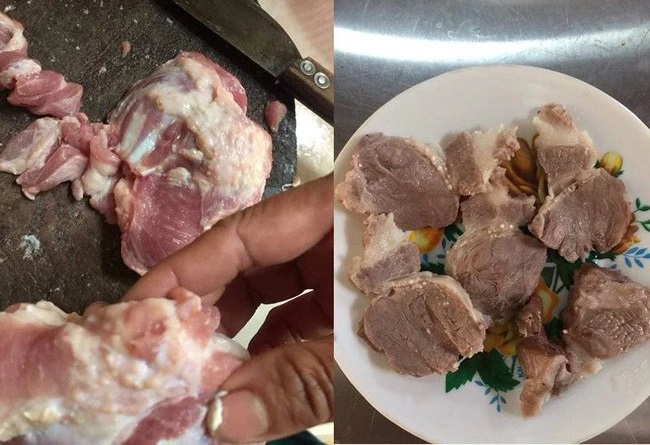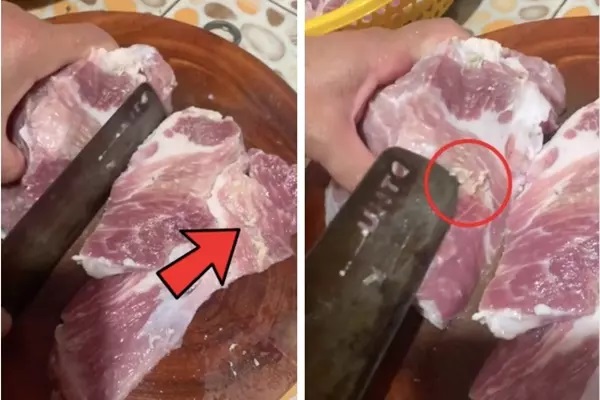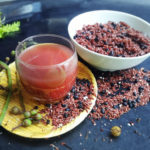The Dangers of Eating Meat Contaminated with Tapeworms
Once ingested, tapeworms can grow up to 7m long in the human body and can lead to malnutrition, weakness, and diarrhea. The larvae of tapeworms can also cause damage to the brain, eyes, skin, and muscles.

Eating pork contaminated with tapeworms can result in symptoms such as bloating, abdominal pain, and difficulty digesting. In severe cases, it can cause weight loss, neurological disorders, anemia, and negative impacts on the intestinal microbiota.
How to Identify Tapeworm Contamination in Beef and Pork
Observe the meat
To determine if pork or beef is contaminated with tapeworms, look at the areas with a lot of movement, such as the sirloin muscle and thigh meat. If you find white rice-like particles, those are tapeworm larvae that usually cluster together within the meat. In some cases, if there is a high density of tapeworms, cutting the meat can cause the larvae to fall out. Therefore, pay close attention when making a purchase.
Inspect the meat by cutting along the grain
To detect tapeworm contamination in pork or beef, you can use a simple method of cutting the meat along the grain and examining it.
If you see white spots the size of a pinhead, the meat is infected with tapeworm cysts. If you find thin fibers or oval-shaped structures the size of a bean, white or grayish-yellow in color and parallel to the meat fibers, you should remove the meat as it is contaminated with tapeworms.
Assess the tenderness of the meat
This is one of the quickest and most effective methods for detecting tapeworm contamination in meat, especially for homemakers who buy from local meat vendors. When touching the meat, if it feels firm or lacks elasticity and is not tender to the touch, it indicates that the meat may have been treated with sodium polyphosphate, urea, and may have a high risk of tapeworm larvae contamination.

How to Safely Consume Pork and Beef
– Never consume raw or undercooked pork or beef. Make sure to eat the meat immediately after cooking and avoid leaving it out for too long, as it can provide a favorable environment for other bacteria to grow.
– Avoid cross-contamination between raw and cooked foods. Clean tools such as knives and cutting boards thoroughly before using them for other cooked foods.
– Wash your hands thoroughly before and after cooking, especially after any interruptions to perform other tasks. When your hands are contaminated, bandage and cover the infected area before handling food.





































